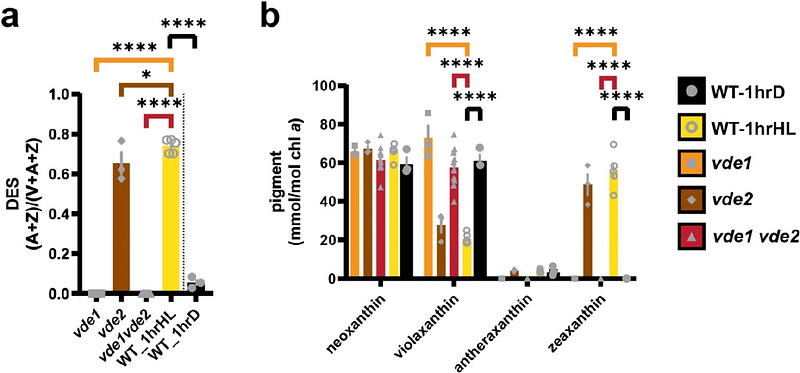Chlorophyll to Zeaxanthin Energy Transfer in Non-Photochemical Quenching: An Exciton Annihilation-free Transient Absorption Study

Chlorophyll to Zeaxanthin Energy Transfer in Non-Photochemical Quenching: An Exciton Annihilation-free Transient Absorption Study
Lee, T.-Y.; Lam, L.; Patel-Tupper, D.; Roy, P. P.; Ma, S. A.; Lucas-DeMott, A.; Karavolias, N. G.; Niyogi, K. K.; Fleming, G. R.
AbstractZeaxanthin (Zea) is a key component in the energy-dependent, rapidly reversible, non-photochemical quenching process (qE) that regulates photosynthetic light harvesting. Previous transient absorption (TA) studies suggested that Zea can participate in direct quenching via Chlorophyll (Chl) to Zea energy transfer. However, the contamination of intrinsic exciton-exciton annihilation (EEA) makes the assignment of TA signal ambiguous. In this study, we present EEA-free TA data using Nicotiana benthamiana thylakoid membranes, including wild type and three NPQ mutants (npq1, npq4, and lut2) generated by CRISPR/Cas9 mutagenesis. Results show a strong correlation between excitation energy transfer from excited Chl Qy to Zea S1 and the xanthophyll cycle during qE activation. Notably, a Lut S1 signal is absent in the npq1 thylakoids which lack zeaxanthin. Additionally, the fifth-order response analysis shows a reduction in the exciton diffusion length (LD) from 55 {+/-} 5 nm to 38 {+/-} 3 nm under high light illumination, consistent with the reduced range of exciton motion being a key aspect of plants' response to excess light.